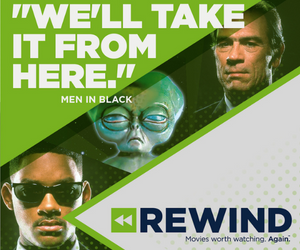
GATINEAU – At one point during the CRTC’s Let’s Talk TV hearing yesterday, chairman Jean-Pierre Blais noted the utter lack of media in the room covering the primary focus of day eight, accessibility.
While we covered the hearing via webcast Wednesday, the chair has a very good point. While the talk of a potential “Netflix tax” or a skinny basic or pick and pay or Super Bowl ads made all kinds of headlines over the past number of days, the fact that a good chunk of the population has a lot of trouble seeing or hearing TV content on any platform remains a major weak spot in the system.
Several presenters used their time in front of the Commission Wednesday to note how despite regulations in place, the system often doesn’t work for them. For example, said a few of them, it’s impossible to find a BDU customer service rep who knows how to trouble-shoot issues for those who are hearing or vision impaired, making the task of even calling their provider for help, daunting.
Actually, using the many buttons required just to get the CPAC.ca webcast to appear on the Cartt.ca office television gave us pause. If we were vision impaired, that task itself would be near impossible without help. Despite Commission mandates for closed captioning and described video, Blais and his panel of fellow commissioners got an earful from the various folks who made their case on how the system needs to improve. Here are some samples:
*****************************
Cindy Ferguson, a blind woman from Strathroy, Ont. came to Gatineau to note how the system fails her. Something we all take for granted, like a weather warning text scroll on the bottom of a TV screen is completely useless to her.
“Television has the ability to ensure our safety. Emergency alert bulletins warn Canadians of imminent or unfolding dangers such as tornadoes, wildfires or hazardous chemical spills. Knowledge of potential weather and safety concerns allows Canadians to take any appropriate actions of precautions to protect themselves, their families, their homes and communities,” she said.
“Unfortunately, blind and visually impaired Canadians can not access emergency alert bulletins delivered as scrolling text and are therefore not able to take any necessary actions or precautions to protect themselves, their homes and their communities.”
*******************************
Later, Diane Johnson, founder and CEO of Descriptive Video Works said: “I ask you to please sit quietly for a moment and imagine you are given a book to read that everyone is talking about, except that all of the text except for the dialogue is blacked out. How much of the story would you grasp and understand? This is what it is like for a person who is blind experiencing television that is not described.”
While there are regulations which require broadcasters to have four hours of their programming described per week (where all is supposed to be closed captioned), Johnson decried the uneven nature of some of the broadcasters’ described video. “Feedback tells us that there is significant variation in DV quality present on Canadian channels. One viewer tells us that there are certain channels that she will not watch as the quality of the description is so poor that the DV does not allow her to follow the story line.”
While broadcasters often complain about the cost of described video, Johnson noted that cost is decreasing, to about $650 on average for a half hour show, which is 20% lower than a decade ago. However, she noted, “a blind viewer pays the same price for a home cable package as a sighted viewer, yet can only access a fraction of the programming, that which is described. We believe it equitable that they have access to the same level of programming as all viewers, which they are paying for every month. This can only happen with 100% of television programming described.”
“A blind viewer pays the same price for a home cable package as a sighted viewer, yet can only access a fraction of the programming.” – Diane Johnson, Descriptive Video Works
**********************************
Of course, some interveners praised what is working with captioning and described video, but they also placed their hopes in the Commission coming up with solutions to carry through DV and CC to non-linear programming provided on other platforms, too, where “for example, broadcasters would be expected to ensure that, when linear programming that includes DV or CC is broadcast over digital media, the dv and cc is included in the non-linear version,” said Laurie Alphonse, of the Disabled Women’s Network.
“We hope for tangible results from this hearing and respectfully ask the Commission to eliminate the ‘should’ by changing it to ‘must’ in their future policy development. Further that they regulate to ensure set top boxes are user accessible for Canadians with disabilities and that this regulation spell out – to the click- what type of access is expected. Anything less does not work,” added Alphonse.
**************************************
Accessible Media Inc. (whose TV channels are must-carries for all Canadian BDUs) also appeared before commissioners to tout its successes and ask for additional changes. It supported the CRTC’s proposal to create a skinny basic (the Commission has already said AMI and other 91(h)channels would remain within such a basic package) and cap it at between $20 and $30 a month. “The retail cost of basic is increasingly becoming a major issue for low income Canadians including those with perceptual disabilities,” said AMI VP finance Line Gendreau.
“For many, the rising cost of basic has meant that television is simply no longer affordable. When the cost of access becomes prohibitive, blind and partially sighted Canadians become even more socially isolated than they often already are.”
Other issues arose during the day which don’t fall under the Commission’s purview, such as the makeup of remote controls and forcing the captioning and description of online content and other consumer electronics issues which chairman Blais urged presenters to take up with their MPs.



